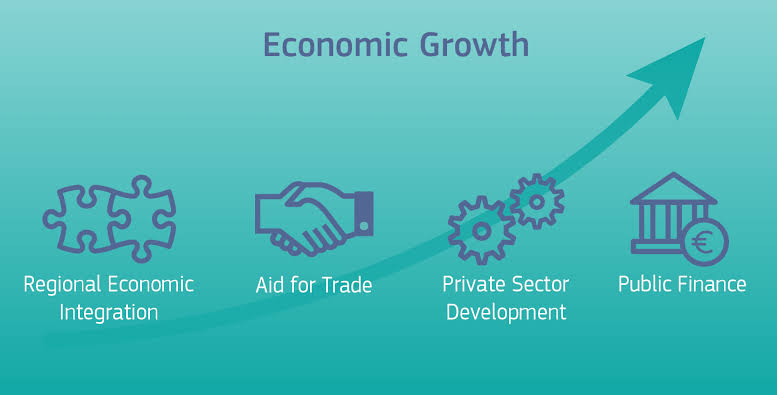The Edtech Industry and its Contribution Towards Economic Growth

From the conventional teacher-classroom model that has been in existence for centuries, the 4th industrial revolution, with technology at its core is disrupting typical teaching and learning models and slowly transforming content into the more convenient and easily accessible digital forms. Unlike before, learning experience, innovation, convenience, and collaboration are becoming more important. 86% of teachers in a survey that was carried out believed that using edtech in a classroom setting was important while 96% believed that edtech will change student engagement for the better. Blended learning for enterprises has become a necessity more than a luxury.
The edtech industry has grown tremendously over the years to become a huge and profitable sector and is projected that it will be worth $252 billion by the year 2020 with a 17% yearly growth as distribution and platform scale.
Table of Contents
6 notable technological trends that are shaping education include
Augmented Reality (AR), Virtual Reality (VR) and immersive learning
Augmented Reality and Virtual Reality, though different, both have a role to play in enhancing immersive learning. AR and VR make learning more engaging and allows learners to have hands-on experience and better comprehension as they go along.
AI and learning delivery
While there may be concerns about AI replacing teachers, this is a little far from being realized because there is no innovation that has been witnessed that will replace human interpersonal skills. However, Artificial Intelligence is helping institutions to create personalized study resources that align with students’ needs and enhance student-tutor interaction while giving feedback on a student’s learning progress.
Online learning and digital content
In a poll that was done, 75% of the participating educators believed that by 2026, textbooks will be replaced by digital content. This opens up edtech to a world of possibilities including convenient and flexible online and distance learning. Content technologists are growing in number with a focus on transforming textbooks into digital formats and customizing learning content to meet learners’ specific needs.
Distant and collaborative learning
It is not just distance learning that appeals to digital-age learners. The fact that within the same distance learners collaborate and actively participate in classroom sessions is one of the biggest transformations that technology has brought to education. Collaboration platforms and forums are emerging technologies that give students the classroom experience away from the class.
Big data and personalized learning
Where the customer is king, big data and data analytics play an important role in customer retention. It is no different in the edtech industry. Big data helps educators to pick out areas in their system that need more attention and create solutions for them.
Mobile technology and on-demand convenience
The world’s population today owns more devices than it did before. Smartphone ownership has contributed to the wide access to digital resources that we see today. For this reason, industry players are now focusing on creating mobile-friendly content that learners can access on-demand with much flexibility and convenience.
The place of Learning and Development in Corporate Training
Today’s work environment is characterized by dynamism. Thanks to technology, there is always a demand for new skills and the need for businesses to match up to this demand to remain ahead of things. Learning and development is one way in which corporate organizations empower their employees to upgrade their skills and knowledge to face new challenges.
It is important to note that growing and retaining existing talent is way cost-effective for a business than retrenching and recruiting new talent. Before a business lays down an L&D strategy, it must weigh the need based on the following factors. business
- Overall business objective. What does the organization intend to achieve in the short and long term? Will investing in learning and development contribute to the timely achievement of these goals. If so, what would be the best approach to implementing a strategy that will not interfere with work and productivity?
- Availability of tools and resources. The available resources will help a business to determine whether to invest in training in-house or partner with a training provider. Both have their advantages in that, while the former will yield team spirit, the latter lets the organization tap from top industry experts. However, a blend of both can have more impact on employee performance and the overall profitability of the business.
- Effect on employee thinking, motivation, and innovation. What would the effect of training on employee thinking and attitude? Will it yield self-motivation, innovation, and empowerment?
- Effect on employee retention. A learning and development strategy that results in staff loyalty, commitment, job satisfaction, and competency is certainly a worthwhile investment.
How is Blended Learning Beneficial to enterprises?
With the advancement in technology, learning models have evolved from traditional classroom learning to include online learning, online lab, independent learning, and others. A learning model that leverages the advantages of the different models in one flexible learning option comes with worthwhile benefits.
Blended learning, sometimes known as hybrid learning, is a mode of learning that incorporates elements of both face-to-face and online learning hence putting the student in charge of their learning to create a better learning experience.
Enterprises that have invested in training and development stand to gain much from blended learning. Some benefits include:
- Flexible. Blended learning empowers the student with convenience, flexibility, and self-paced learning given that employees may not have much time at their disposal to dedicate to learning and development.
- Personalized. Blended learning meets learners’ specific needs. Blended training can be structured in such a way that it captures specific job skills and interests so that while employees engage in learning and development, the enterprise’s skills gap is also met.
- It reaches and appeals to many. While still meeting personal needs, blended learning can appeal to the masses. Thanks to the availability and accessibility of digital tools like videos, e-books, recordings, and others, learning resources that are available throughout and later for reference. This means fewer classroom sessions and more flexible learning time.
- It is cost-effective. Online learning is a time and money saver. It saves both the students and the tutors the time and resources it takes to attend a class in person. It also saves resources that would have been used in the production of books and study materials.
- Measurable results. Just as its structure allows an institution, tutors included, to lay a clear learning path for individual learners, it equally allows for measuring progress and ultimately, final performance. In the same regard, it will be possible to measure performance against the organization’s overall performance and determine its value to the business. Employees can then be promoted or assigned tasks based on their performance in learning.
How Edtech Contributes to Economic Growth
Edtech is a huge emerging industry with a specially skilled labor force. It is estimated that the edtech industry will be worth $252 billion by the year 2020 with software and services accounting for the largest segment at 60%.
While it is believed that there is a skills gap which is the main reason why professionals are opting for upskilling or reskilling, edtech is the wheel behind the acquisition of these skills. It makes it possible for professionals to flexibly and conveniently acquire new skills which in turn betters their performance and productivity at the workplace.
Edtech incorporates most other emerging technologies like AR, VR, IoT, Big Data, Cloud Computing, robotics, and others. With increased awareness and demand for these emerging technologies, edtech then becomes the channel that creates opportunities for innovation, research, and development.
In conclusion, anything that builds on education builds the economy. Edtech creates technology jobs, spurs innovations and startups while still creating new and useful models and solutions for teaching and learning.





